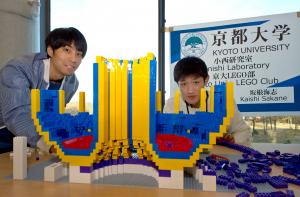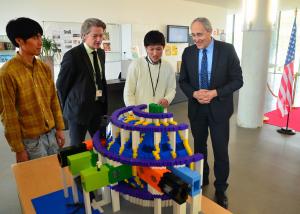2 Japanese students, 4 days and 40,000 Lego bricks
For almost a week, the lobby of the ITER Headquarters building was occupied by two special guests. Surrounded by mountains of boxes and thousands of brightly coloured bricks, Taishi Sugiyama and Kaishi Sakane from Kyoto University had four days to build an ITER Tokamak ... from 40,000 Lego bricks!
Passionate about nuclear fusion, Taishi, 24, and Kaishi 25, are also big Lego fans. They are active members of Kyoto University's Lego club and have experience building smaller Lego models of the ITER Tokamak. Their previous realization, displayed at the ITER stand at last year's Fusion Energy Conference in Kyoto, was one of the principal points of interest.
Taishi and Kaishi's proposal was among the 6 (out of 13) winning projects. Their travel expenses and hotel accommodation fees were funded by the University and the way was open for the two students to live a unique experience.



